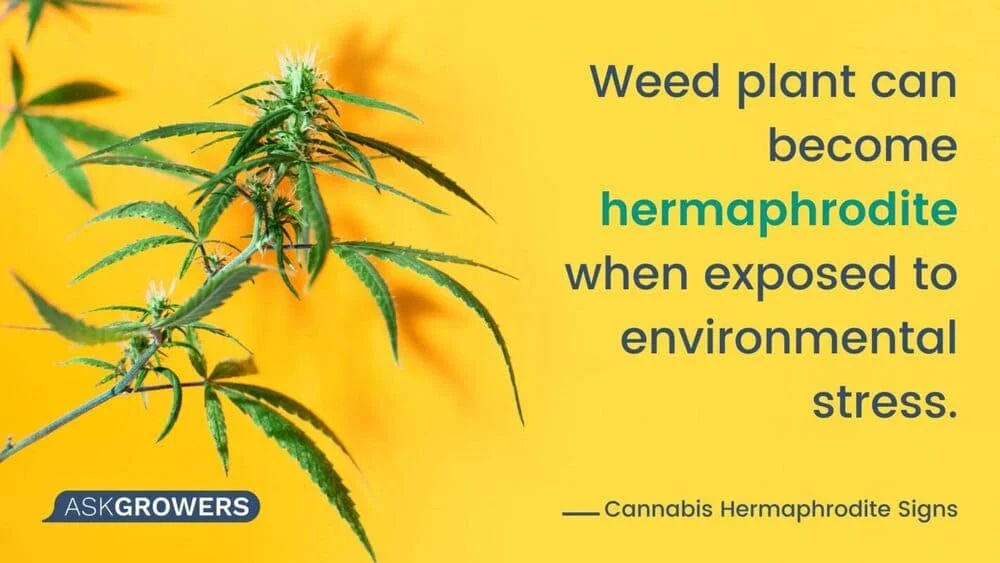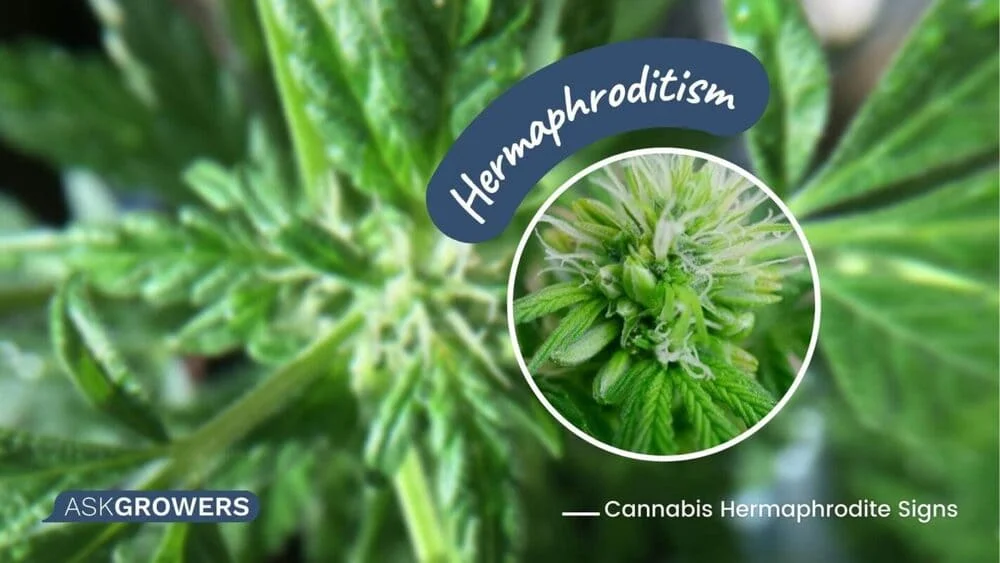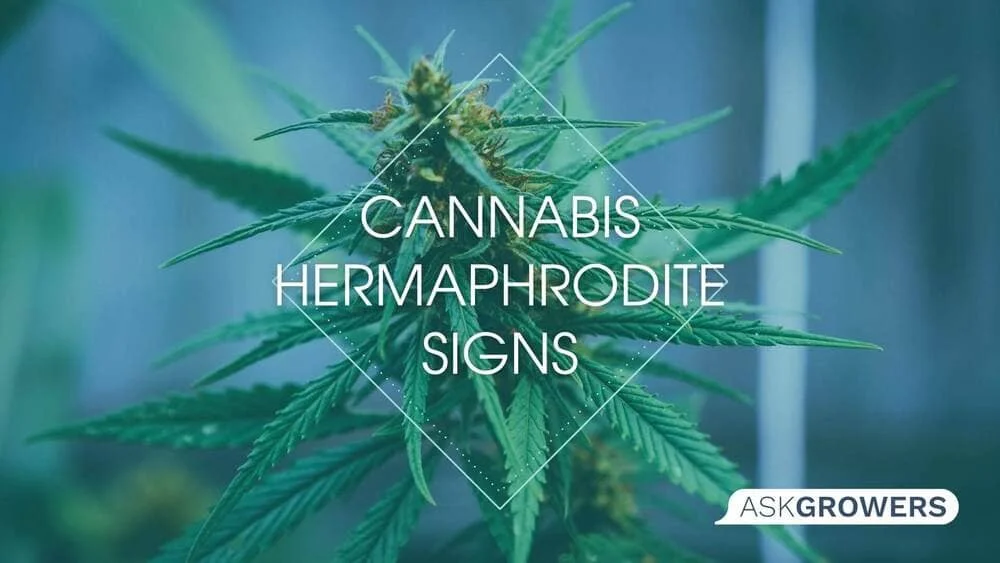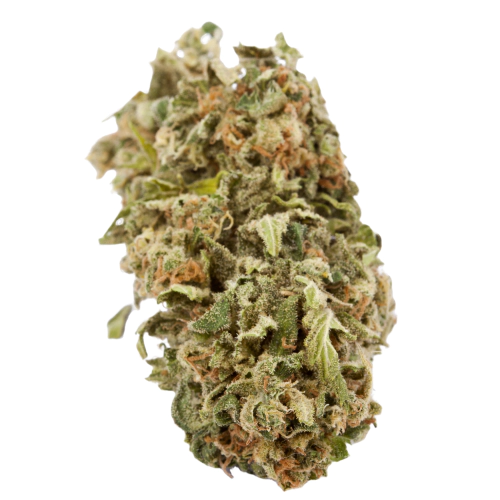When it comes to cannabis cultivation, gender is everything. Only female marijuana plants are used in commercial production, while male plants are destroyed due to poor flower quality. Male plants are also avoided because they release pollen grains that deliver seeds in female plants, which adversely affects cannabinoids production. While growers have learned to identify and eliminate male plants to ensure the optimal yield, spontaneously occurring hermaphrodites may be a riddle for many weed lovers. This article defines hermaphroditism in the context of cannabis and explains why it occurs, how to identify it, and how to avoid it in marijuana cultivation.
Uncovering Marijuana Plant Gender
Research shows that cannabis plants can be male, female, or androgynous (co-sexual). It is believed that the existence of male and female plants is a fundamental evolutionary mechanism that enables cross-fertilization and allows maintaining high genetic diversity. Hermaphroditism, in turn, may serve to ensure self-pollination, which is another essential surviving mechanism during hard times (e.g., unfavorable environmental conditions).
Hermaphroditism means that a plant develops flowers of both sexes. Hermaphrodite plants, which are all are genetically female, can be of two types:
- Plants developing buds and pollen sacs
- Plants producing anthers with a banana-like look
Most of the time, the number of male flowers on the hermaphrodite plant ranges from just a few to many.
But if gender determination is a natural process, why hermaphroditism is so harmful to the cannabis garden? If not removed timely, it can pollinate all plants, leaving you with a minimum yield.
Causes of Hermaphroditism
What causes a female cannabis plant to turn hermaphrodite? The first and least understood cause is genetics. Somehow, hermaphrodite genes can be transferred from plant to plant, making it challenging to predict sex changes. Some cannabis strains have a genetically higher rate of hermaphroditism. For example, some Indica strains are known to transform into hermaphrodites when female plants experience extended periods of darkness during the early stages of their growth.

However, if you found a hermaphrodite plant in your garden, hold off on writing angry letters to the seed bank complaining about the seed quality. Take a closer look at your garden and see whether you do everything right. Sometimes, co-sexual plants grow in places exposed to environmental stressors, such as undesirable weather conditions, nutrient deficiencies, diseases, etc.
Suppose you know that your plants have been exposed to stressors. For example, you forgot to switch the light off several times, exposing the plants to excessive light, or did not water them well. In such cases, you need to monitor the garden closely to identify hermaphrodite plants as soon as possible. It is a tedious chore because you need to monitor plants every day. There are other sources of stress to avoid:
- Cold temperature
- Excessive use of chemicals
- Wrong pH
- Overwatering or underwatering
- The lack of aeration
- Wrong trimming
In other words, anything that means less than perfect conditions for the plant may cause stress, which in turn may trigger sex changes.
Hermaphroditism Signs
Knowing how to spot cannabis hermaphrodite signs is an art that weed growers have mastered for a long time. The sex of marijuana plants can be identified when the first signs of bloom appear. This happens when you alter the lighting schedule to give your plants the sign to move from the growth stage to the flowering stage. Typically, this process occurs from a few days to a week.
So, what signs should you pay attention to? Look at the node regions of the main stem, between the stipule and the axillary bud. This is where flowers that indicate gender develop. The appearance of undifferentiated flower primordia marks the first sign of flowering. As time passes, it is possible to distinguish sex. The male flowers containing pollen look like ball-shaped, curved buds with five radial segments. Female flowers, in turn, have a tubular calyx with tiny white hairs (pistils). When you see both male and female reproductive organs on the plant – it means you have a hermaphrodite.

Avoiding Hermaphrodites: Top Tips
Now that you know how to identify a hermaphrodite weed plant based on flower distinctions, let’s go through some valuable tips to help you do it quickly and accurately.
- Regularity is essential, so you need to check your plants every day to identify early signs of hermaphrodite weed and prevent pollination.
- Be attentive, as hermaphroditism can develop within hours. Male flowers can hide under the leaf junctions of female plants, so take your time and inspect every plant diligently.
- If you are impatient and want to learn the plant’s sex faster, you can use the cuttings from each plant. Place them in a cup filled with water and switch on the light for 8 hours every day. Once cuttings begin to flower, you can determine the sex, which is similar to the sex of the plants from which they came. This artificially induced early flowering may help you identify and remove hermaphrodite and male plants earlier. Be sure to mark every cutting to avoid confusion.
- If you find a hermaphrodite plant that only produced a few male flowers, you can remove them with a pair of tweezers and continue watching the plant’s development. If you see too many male flowers, there is no other option than eliminating the plant from the growing space.
- Want to avoid all this fuss? Purchase seeds that are less prone to stress and have no genetic predisposition to hermaphroditism. In this way, you will decrease the risk of growing co-sexual plants.
- Last but not least, watch the conditions in which your garden exists. Make sure you create a perfect environment for your plants. By eliminating stress, you will increase your chances of growing strong female plants that bring you optimal yield.
Discover the Best Feminized Seeds
Conclusion
Hermaphrodite plants are a breeder’s nightmare. They emerge unexpectedly and can ruin your whole garden if you miss the pollination stage. However, if you know how to identify hermaphrodite plants timely, you will not lose the precious yield. Follow the simple guidelines provided in this article, and you’ll become a pro in hermie identification.


